Animals of the Serengeti Book Review
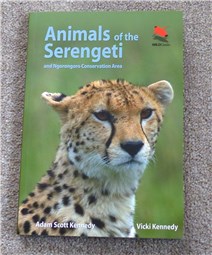
Who has not dreamed of visiting Africa and seeing the spectacular mammals of the Serengeti? Every since I was old enough to read I sought out information on this magical far away land full of wild exciting animals. Just the name "Serengeti" sends a shiver of excitment down the spine, vast numbers of large mammals on the move, something everyone would be thrilled to see.
This handy easy to use, and pack, photographic guide will make you want to book the flights and head for Tanzania! One hundred and fifty pages are packed with colour photos of all the mammals you are likely to encounter on safari in the Serengeti. The images are of a very high quality and the authours have done a great job bringing together so many lovely photographs. This book states it has three major aims -
To help you identify any species that you are not sure about (you know it is a mongoose - but which one?
To offer you lots of interesting and easily digestible information on each species.
To show you that there is much more to look for than just the "Big Five".
This great little book ticks all three boxes and should be in your day pack along with your Field Guide to the Birds of east Africa.
The book opens with a "How to use this book" section - always useful to get the most out of your purchase. Esch animal has a fact file which details name, English, local African and Massai. Size, given in metres and feet, gestation period - not sure how useful this is, recognition, habits, where to find and what the animal feeds on.
Next six wildlife guides are introduced, these guides have contributed their knowledge to the book and very nice to thank them publicly. Five of these guides all work for one company, so maybe a little plug in there?
A section on the Geography of the Serengeti and Ngorongoro Conservation Area which gives a concise over-view of the area, including geology, climate and vegetation. Interesting but short enough that most people will actually read it!
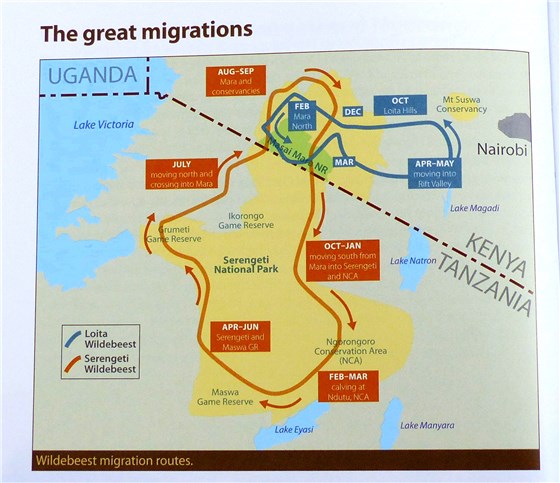
If there is one thing the Serengeti is world famous for it is the mass migrations of mammals - over two million beasts on the move! The map simply explains the route of the migration and most importantly when and where the animals will be present. Four pages are given over to the migration and make exciting reading, who would not want to witness this mass movement of wild animals. A clear map shows ten top wildlife viewing areas and this is followed by a brief discription of each and the highlights to be looked for.
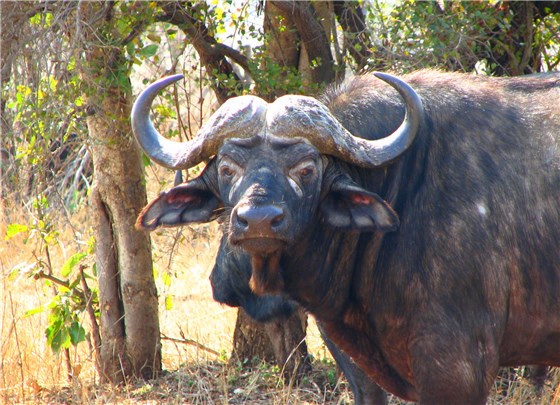
Then comes the main part of the book the detailed guide to the animals themselves and this is the most important bit! Each animal has at least one, often more, great photograph and lots of useful information. Of course the big five are in there, Lion, Leopard, African Elephant, Black Rhinoceros and Cape Buffalo, all are covered well with plenty of photos to enthuse you before your visit.
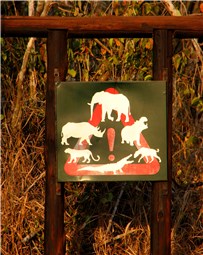
There are some tips on safety in there and scattered through the main accounts are text boxes with notes from the guides we met earlier, nice touch. These are personal anecdotes and bring the accounts to life, always good to read first hand accounts of wildlife watching.
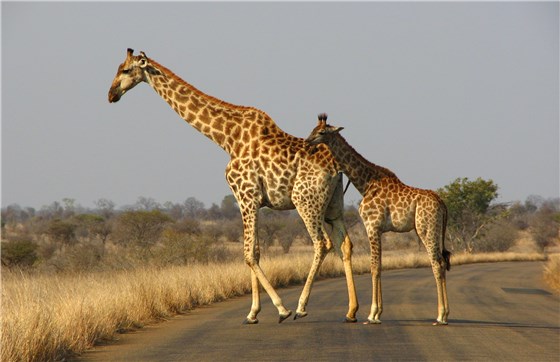
I found the information on the un-sung animals of the Serengeti most interesting and their images most useful. I guess most people could identify the "Big Five", wouldn't they? Then again thinking back to some people we have met at Safari lodges maybe not! But how many would know how to tell a bushpig from a warthog? Or could you confidently call banded mongoose from slender mongoose? Animals of the Serengeti will help!
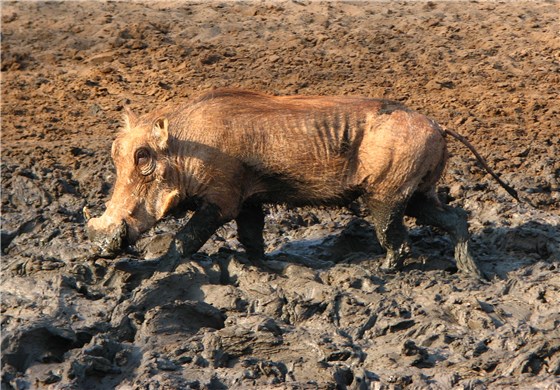
It was great to read up about the mammals that we hear little about and learn more of their habits and hopefully increase our chances of seeing them next time we are lucky enough to get back to Africa. A close encounter with a white-bellied hedgehog or a honey badger would be amazing. We have been lucky to see aardvark, and what a thrilling moment that was, but we had realised that the English name derives from the Afrikaans for earth-pig.
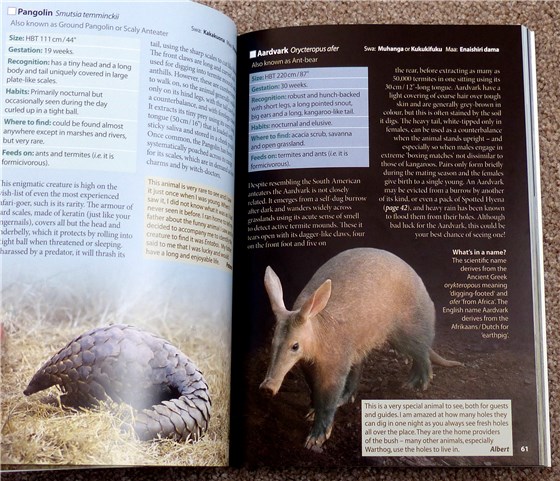
After all the mammals comes the last section covering Reptiles and this introduces the most likely ones to see. Again stunning photographs and concise text will help you sort out what you see and what to avoid!
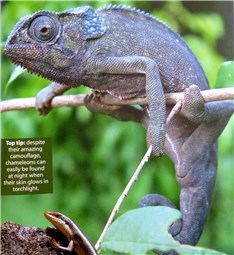
We have been very lucky to travel to amazing parts of Africa and experienced many of its amazing mammals, a huge numbers of birds, but have not made it to Tanzania yet! This book has done nothing to dampen our wish to visit this wonderful land with so much wildlife, it has just moved up the wish list!
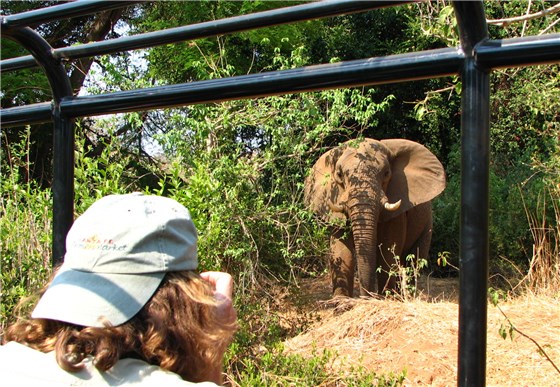
Being out in the bush with magnificent wildlife is a real thrill, seeing wild African elephants is just wonderful though you need to be very aware these are wild animals!
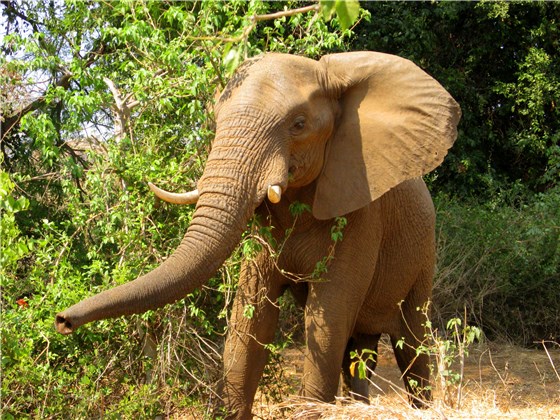
Being charge by a young bull elephant certainly makes you realise that you are in their world and the animals have the right of way! We hope this great book will encourage people to visit Africa and see amazing wildlife and hope that the thrill of seeing these animals will lead to better conservation of them. To see something first hand gives you a conection and you are much more likely to want to take action to conserve it.
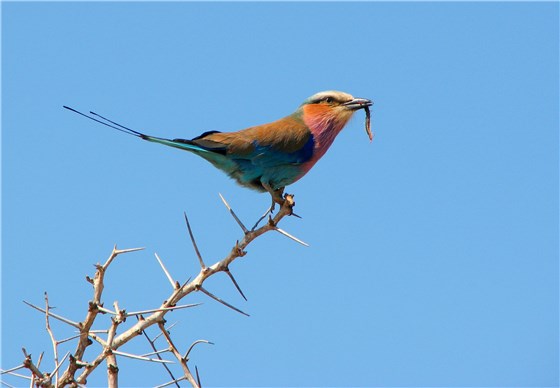
Of course we could not write a blog without at least bird photograph included! If you travel to Tanzania you will not only enjoy amazing animals but also be thrilled by stunning birds such as this Lilac-breasted Roller we were lucky enough to enjoy in South Africa during The Biggest Twitch.
Animals of the Serengeti and Ngorongoro Conservation Area is by Adam Scott Kennedy and Vicki Kennedy published by WILD Guides through Princton University Press.
ISBN 978-0-691-15908-9
We recommend this great portable guide and will be packing it on our visit to the Serengeti for sure!